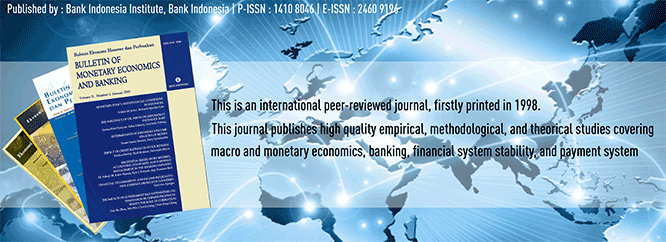
Document Type
Article
Abstract
This paper examines the demand for currency and quasi-money in Indonesia with linear and neural network models. The goal is to predict better the recent financial distress, reflected by the flight into currency and decline of quasi-money.The results show that neural network approaches, much more than linear models, are capable of accurate out-of-sample predictions for both monetary aggregates. However, for the very turbulent period of November and December of 1997, even the neural network models show large out-of-sample forecast errors. When a proxy for exchange-rate uncertainty supplements the network models, the out-of-sample currency demand becomes quite accurate, even for the last month of 1997. The quasi-money demand forecast also improve, although not as dramatically as those of currency demand. The analysis shows that a credible program, which reduces uncertainty in exchange-rate expectations, may mitigate the flight into currency from broad money, and the ensuing demonetization of the financial sector.
Recommended Citation
Mc Nelis, Paul D.
(2000)
"MONEY DEMAND, FINANCIAL DISTRESS, AND EXCHANGE-RATE UNCERTAINTY IN INDONESIA,"
Bulletin of Monetary Economics and Banking: Vol. 3:
No.
1, Article 5.
DOI: https://doi.org/10.21098/bemp.v3i1.287
Available at:
https://bulletin.bmeb-bi.org/bmeb/vol3/iss1/5
First Page
1
Last Page
19
Creative Commons License

This work is licensed under a Creative Commons Attribution-NonCommercial 4.0 International License
Country
Indonesia
Affiliation
Bank Indonesia







